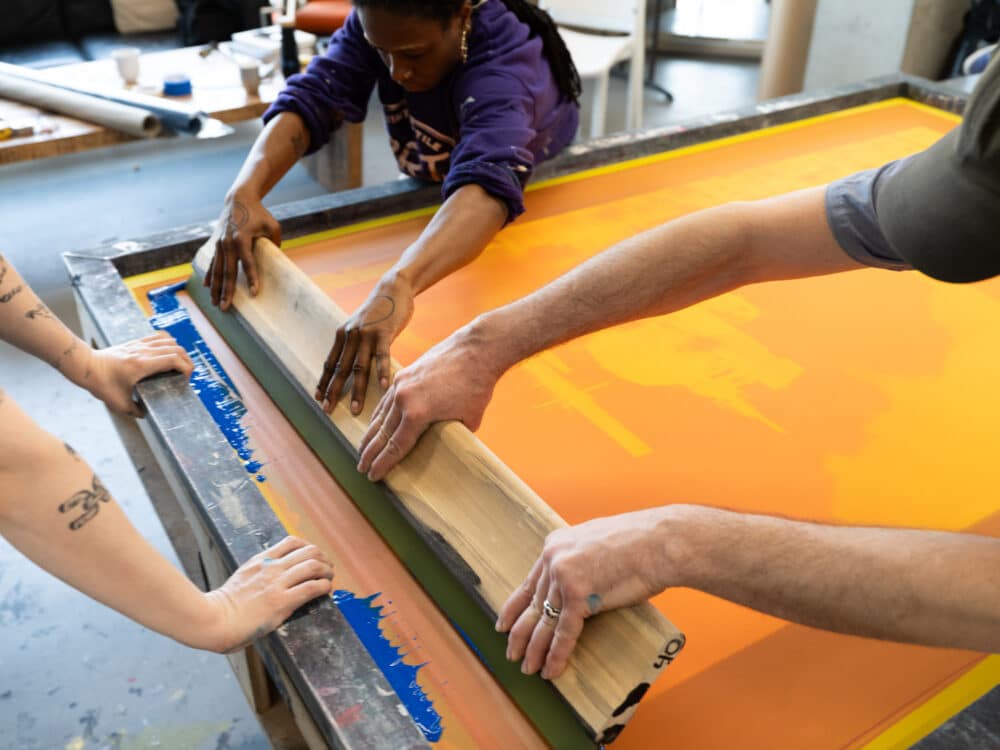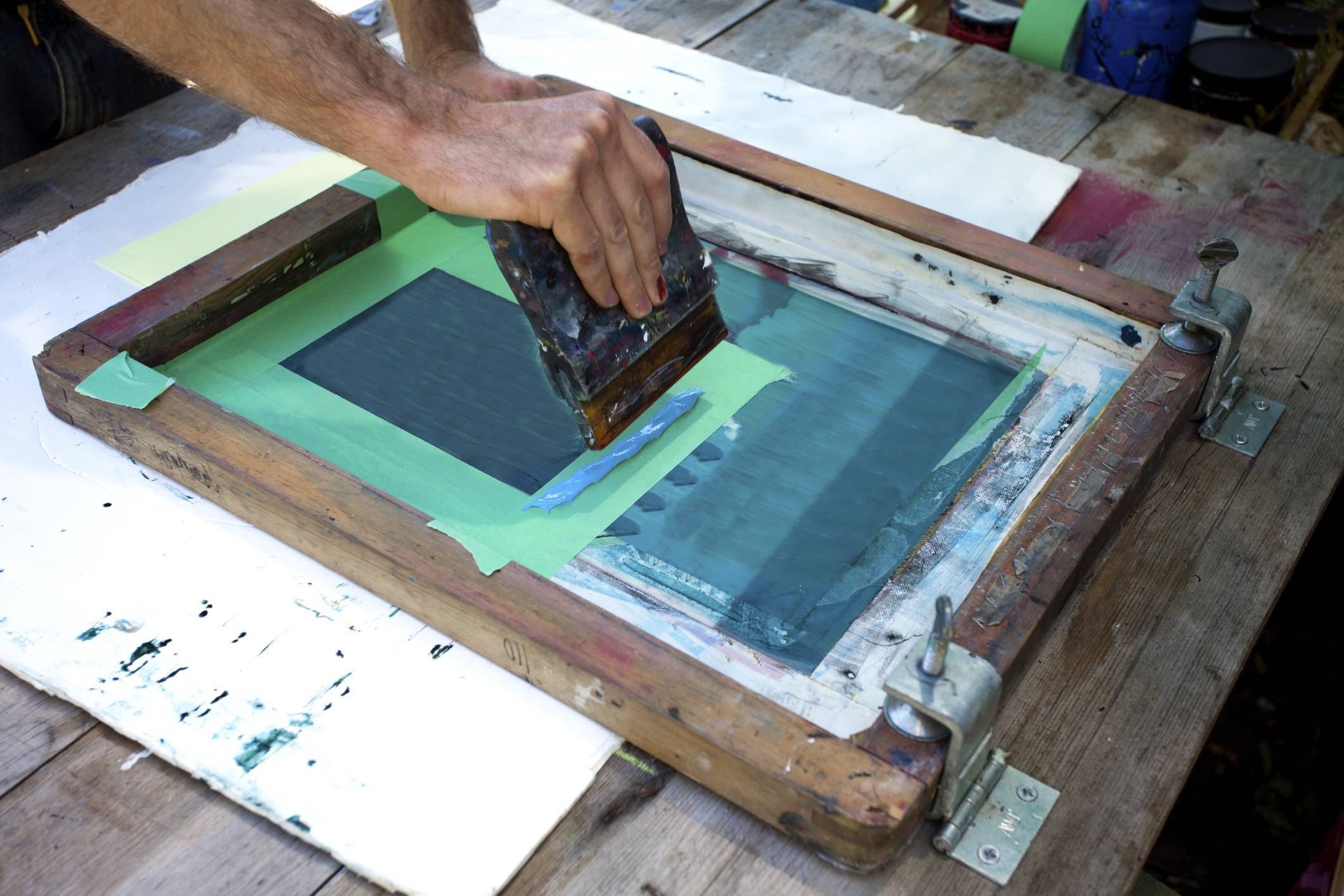The Vital Overview to Understanding Screen Printing and Its Versatile Makes use of
Screen printing has a rich history that dates back to old times, advancing into a sophisticated technique used across various sectors today. This guide explores the ins and outs of the screen printing procedure, describing its applications in marketing, home, and fashion décor - 10:9 Design contact. Recognizing these principles can open creative potential for both commercial and creative projects. The following sections will certainly disclose vital ideas and strategies to improve one's screen printing ventures
The History of Screen Printing
Although screen printing has roots that trace back centuries, its evolution mirrors the technological and creative innovations of different societies. Coming from in ancient China, the method was originally utilized for decorating fabrics and later spread to Japan, where it became essential to Ukiyo-e woodblock printing. The approach shifted to Europe in the 18th century, where it obtained appeal amongst artisans and commercial printers. The development of picture solution in the 20th century reinvented screen printing, permitting even more elaborate layouts and better performance. Artists like Andy Warhol further propelled its appeal, using the tool to produce legendary jobs that mixed commercialism and fine art. By the late 20th century, screen printing had established itself as a flexible method, used in style, advertising, and art. Today, it remains to advance, incorporating digital modern technology and increasing its applications throughout various sectors.
The Screen Printing Process Explained
Screen printing transforms artistic visions right into substantial layouts through a series of precise steps. A picture is produced and then transferred onto a screen, normally made of great mesh fabric extended over a framework. A light-sensitive emulsion is put on the screen, which is exposed to light, hardening in areas not covered by the image. After rinsing the unhardened solution, a pattern is created.
Next off, the screen is put over the substratum, whether it be fabric, paper, or another material. Ink is then pushed via the open areas of the stencil using a squeegee, depositing the design onto the substrate listed below. This procedure can be repeated for multiple colors, calling for different screens for each and every tone. Ultimately, the published thing is healed making use of warmth to guarantee the ink adheres appropriately, leading to a sturdy, lively layout all set for usage.
Kinds Of Screen Printing Techniques

Additionally, specialized techniques, such as discharge screen printing, eliminate color from the fabric to produce softer prints, while aluminum foil screen printing uses metallic aluminum foil to achieve a glossy coating (10:9 Design Screen Printing). Each method offers distinctive features, dealing with numerous creative demands and manufacturing ranges, ultimately increasing the possibilities within the screen printing domain name
Applications of Screen Printing in Numerous Industries

Furthermore, the signs and marketing industries use screen printing for developing distinctive displays and banners. This method permits bold colors and elaborate styles that record interest. In electronics, screen printing is utilized for applying conductive inks to motherboard, essential for part connections. The home décor market accepts screen printing to create distinct designs on textiles and wall surface art. In general, screen printing acts as an important device across diverse areas, enhancing items with individualized and visually appealing graphics.
Tips for Effective Screen Printing Projects
While undertaking a screen printing project, cautious attention to information can considerably improve the final result. Selecting high-grade materials is essential; this consists of the screen, inks, and substratums. Making use of proper mesh counts can impact ink deposition and detail resolution. Prep work is equally crucial; comprehensive cleansing of displays and proper direct exposure times ensure crisp prints.
Next, precise registration is essential for multi-color prints. Making use of alignment tools can assist accomplish accurate layering. In addition, testing prints on scrap materials before manufacturing aids identify potential problems without throwing away sources.

Regularly Asked Questions
What Products Are Ideal for Screen Printing on Material?
Cotton and polyester blends are perfect for screen printing on fabric due to their longevity and ink absorption. In addition, specialty textiles like silk or canvas can produce one-of-a-kind textures and coatings, enhancing the general layout high quality.
Just how Do I Clean and Maintain Screen Printing Devices?
To cleanse and maintain screen printing tools, one should regularly clean screens with proper solvents, inspect mops for wear, lube relocating parts, and shop all items in a dry, dust-free atmosphere to lengthen their lifespan.
What Are the Ecological Influences of Screen Printing?
Screen printing can have significant environmental influences, including chemical waste from solvents and inks, water usage throughout cleansing procedures, and power intake. Lasting practices and environmentally friendly materials are essential for reducing these unfavorable impacts.
Can Screen Printing Be Done in your home Efficiently?
Screen printing can be properly done at home with the appropriate products and strategies. Enthusiasts can create quality prints, though success depends on their skill level, equipment, and understanding of the process entailed.
What Are the Prices Related To Starting a Display Printing Service?

Starting a screen printing business entails expenses for equipment, products, and office. Preliminary expenditures commonly vary from a couple of hundred to numerous thousand bucks, depending on the scale, high quality of machinery, and wanted manufacturing capacity.
Screen printing has an abundant history that dates back to old times, developing right into an advanced strategy utilized throughout different sectors today. One more technique, rotating screen printing, employs cylindrical displays, assisting in continual printing on material rolls, therefore enhancing performance for large-scale productions. In addition, specialty strategies, such as discharge screen printing, remove color from the fabric to produce softer prints, while aluminum foil screen printing applies metal foil to attain a shiny coating. In the fashion sector, screen printing is commonly made use of to create vivid styles on apparel, making it possible for brands to showcase their unique styles. Cotton and polyester blends are perfect for screen printing on textile due to their durability and ink absorption.